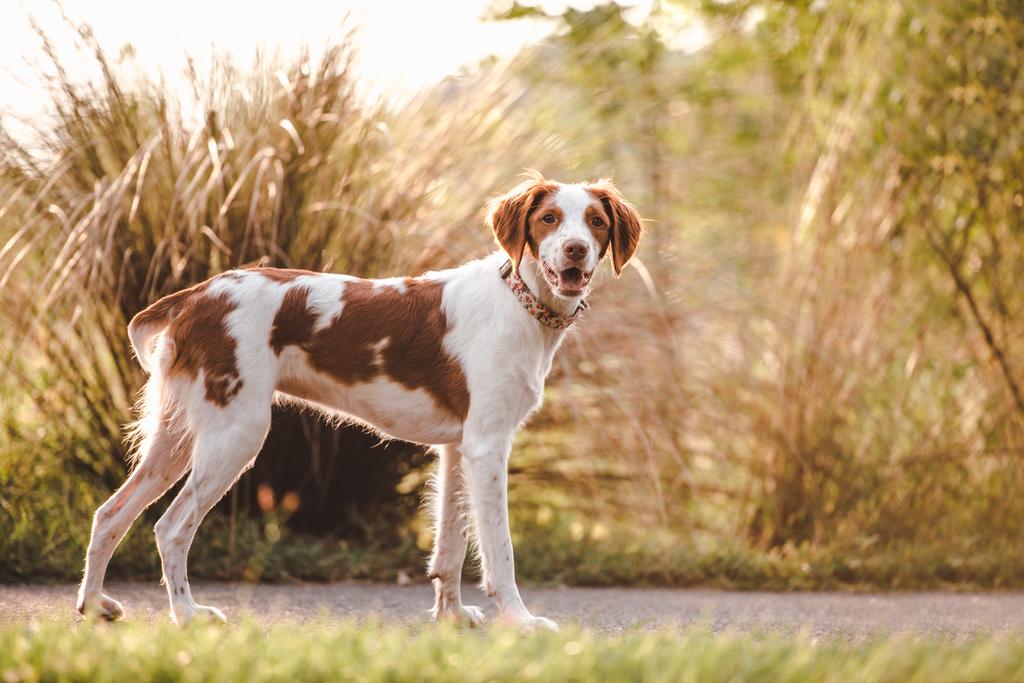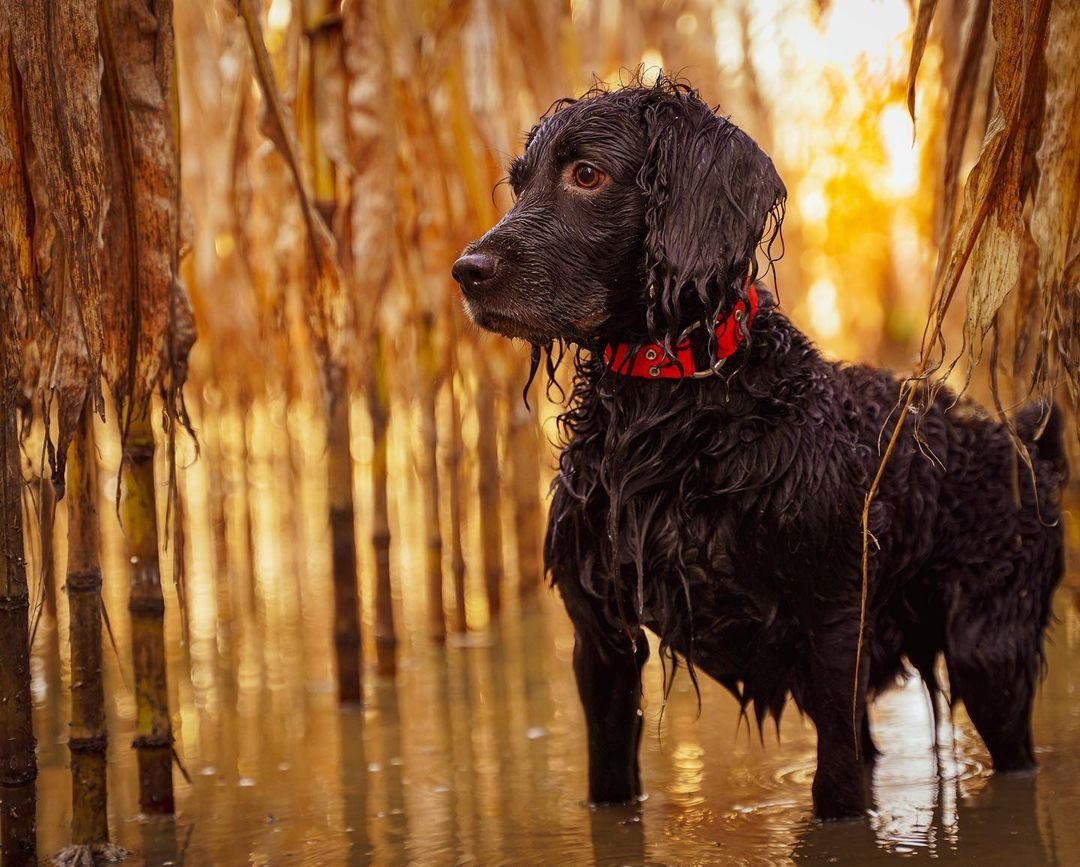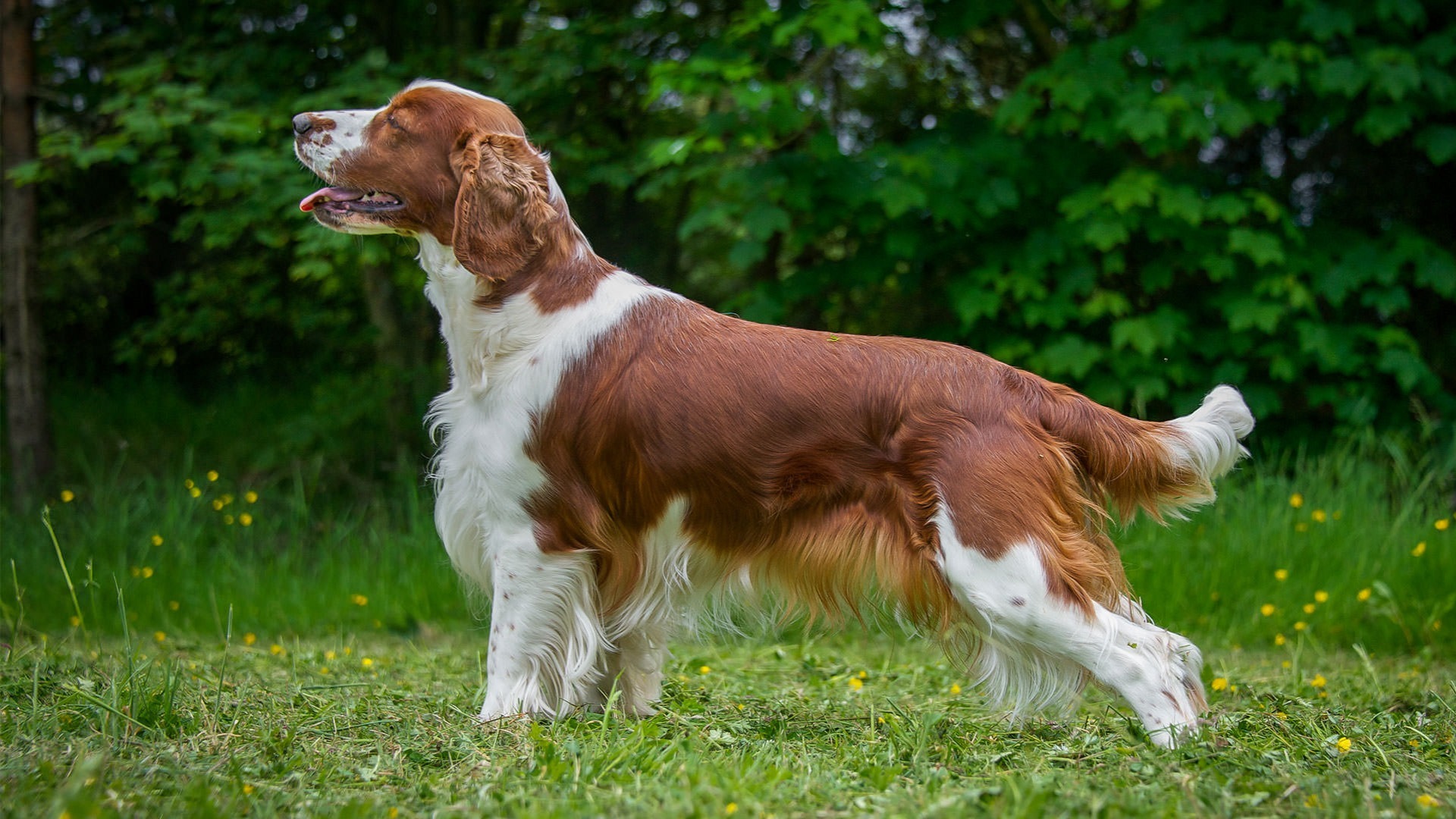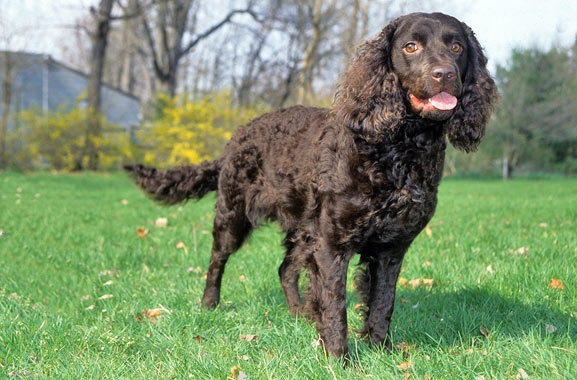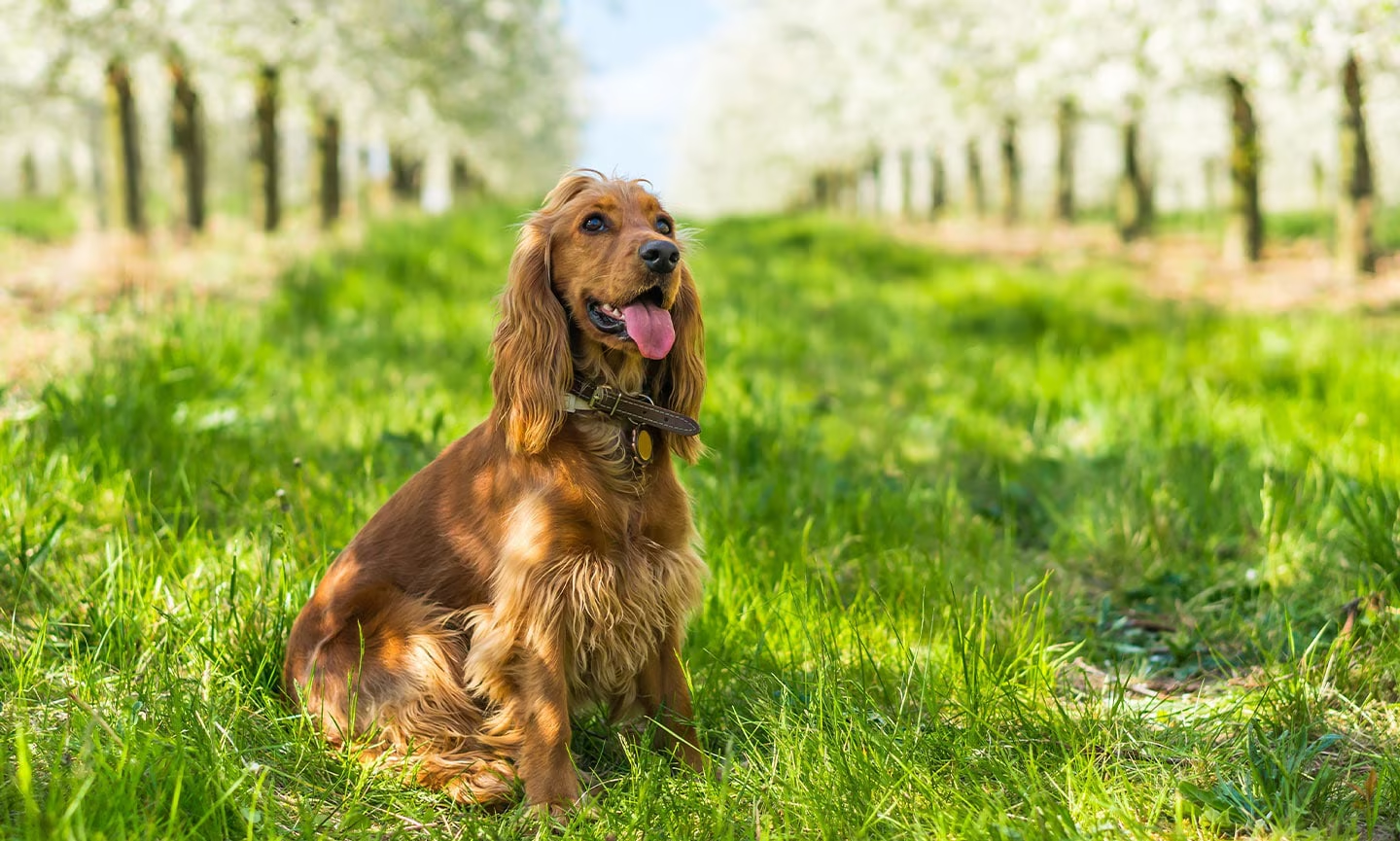When it comes to versatile sporting dogs that seamlessly transition between dedicated hunting partner and loving family companion, the Brittany stands in a class of its own. Originally known as the Brittany Spaniel (though “Spaniel” was officially dropped from the name in 1982), these medium-sized, energetic dogs combine the best qualities of pointers and spaniels in a compact, athletic package.
At pawtrix.wiki, we aim to provide comprehensive information on all dog breeds, and the Brittany deserves special attention for its unique combination of working abilities and family-friendly temperament. Unlike some sporting breeds that excel either in the field or at home, Brittanys truly shine in both environments when their considerable energy needs are properly met.
What makes this breed particularly special is its remarkable versatility. Developed in the Brittany province of France as an all-purpose bird dog for hunters of modest means, these dogs were expected to point and retrieve on both land and water. Today, they continue this versatile tradition, excelling in hunting, dog sports, and active family life with equal enthusiasm.
Throughout this guide, we’ll explore everything that defines the Brittany – from their French origins to their distinctive physical and temperament traits, exercise requirements, and whether they might be the perfect match for your lifestyle. By the end, you’ll understand why Brittany enthusiasts are so passionate about these energetic, intelligent companions with the perpetually wagging tails.
French Origins: From Peasant’s Dog to Sporting Star
The Brittany’s development in the rugged coastal region of northwestern France created a uniquely versatile and efficient hunting companion with deep historical roots.
Development in Brittany Province
Unlike many breeds developed by nobility or wealthy sportsmen, the Brittany emerged from the rural hunting traditions of everyday people in France’s Brittany province. Dating back to at least the 1600s, these dogs were created by peasant hunters and farmers who needed versatile hunting companions but couldn’t afford to maintain multiple specialized dogs.
Their development focused entirely on practicality – they needed to be:
- Skilled at both pointing and retrieving
- Capable of working in varied terrain from fields to woods
- Small enough to be economical to feed
- Energy-efficient workers with good stamina
- Naturally cooperative with minimal specialized training
The exact breeds that contributed to the Brittany’s development aren’t definitively documented, but they likely included various local spaniels and pointing dogs. Historical paintings and tapestries from the 17th century show dogs remarkably similar to today’s Brittanys, suggesting the type has been established for centuries.
Modern Recognition and Development
While the Brittany had been working in France for centuries, formal recognition came relatively late:
- 1907: First official standard established in France
- 1931: Imported to the United States
- 1934: Recognized by the American Kennel Club
- 1982: “Spaniel” dropped from name in U.S. due to pointing (rather than flushing) style
The breed gained rapid popularity in the United States, particularly among hunters who appreciated their versatile working style, compact size, and close-working range. They’ve consistently ranked among the top pointing breeds in field trials and hunt tests while also establishing themselves as excellent family companions.
Interestingly, American and French Brittanys have developed some differences over time. European Brittanys typically have longer legs and rangier builds, while American Brittanys tend to be slightly smaller and stockier. Both retain the breed’s characteristic eagerness and versatility, though European lines often maintain stronger hunting drives.
Working Heritage and Modern Roles
Throughout their development, Brittanys have been expected to perform multiple hunting tasks – pointing game birds with staunch, reliable style, then retrieving after the shot. Their working style is distinctive, characterized by:
- Fast, ground-covering movement with distinctive high head carriage
- Closer working range than many pointing breeds
- Natural retrieving tendencies
- Enthusiasm for water work (though not as specialized as water spaniels)
- Adaptability to different hunting conditions and game
Today, Brittanys excel in various roles beyond their traditional hunting purposes. They’re consistently top competitors in field trials, hunt tests, and various dog sports including agility, rally, and obedience. Their intelligence and energy also make them excellent candidates for search and rescue work, therapy dog service (for active settings), and of course, active family companions.
Distinctive Appearance: The Athletic Bird Dog
The Brittany has a distinctive appearance that clearly reflects its development as a practical, versatile hunting dog for varied terrain.
Size and Structure: Compact and Athletic
Brittanys are medium-sized dogs with a distinctly athletic build:
- Height: 17.5-20.5 inches at the shoulder
- Weight: 30-40 pounds
- Build: Slightly rectangular but compact and well-balanced
- Leg length: Adequate for covering rough terrain efficiently
- Overall impression: Athletic and agile without extremes
Their size represents the perfect balance for their original purpose – large enough to handle demanding hunting conditions but small enough to be economical to maintain and easily transported. Despite their moderate size, they possess impressive strength and remarkable agility, allowing them to navigate challenging terrain with ease.
Everything about the Brittany’s structure emphasizes function over form. They’re built for endurance and efficiency rather than speed or power alone, with smooth, freely moving joints and balanced proportions that allow for tireless work in the field.
Coat and Colors
The Brittany’s coat is designed for practical field work:
- Texture: Flat or wavy, dense but not too long
- Feathering: Moderate on legs, chest, and ears
- Colors: Orange and white or liver and white, either clear or roan patterns
- Markings: May be ticked, patched, or both
- Maintenance: Surprisingly easy despite sporting dog heritage
Their coat provides good protection from brush and weather without being so profuse as to collect burrs excessively or require elaborate grooming. The moderate length and density strike a perfect balance between protection and practicality – another reflection of the breed’s development by everyday hunters.
The traditional orange and white or liver and white coloration served practical purposes as well, making the dogs visible in the field while providing some camouflage when pointing game. The roan pattern (where colored and white hairs intermix to create a speckled appearance) is particularly distinctive in many Brittanys.
The Distinctive Brittany Head
Brittanys have a characteristic head and expression:
- Head: Medium length, not too heavy or too fine
- Muzzle: Square rather than snipey, medium length
- Eyes: Protected by slight eyebrow ridge, expressive
- Ears: Set high, triangular, relatively short for a spaniel
- Expression: Alert, intelligent, and eager
Their expression is particularly characteristic – alert and intelligent with an eagerness that reflects their enthusiasm for work and play. Their eyes should be dark, harmonizing with their coat color, and show remarkable expressiveness that owners often describe as almost human-like in their ability to communicate.
The Brittany head represents a perfect balance between that of typical pointers and spaniels – not as long and angular as most pointers nor as domed and heavy as many spaniels. This distinct head profile helps identify them immediately among sporting breeds.
Natural Bobtail and Movement
Two distinctive physical features set Brittanys apart from many sporting dogs:
- Tail: Many born with natural bobtails or very short tails
- Gait: Distinctive ground-covering movement with head typically carried high
- Style: Combines the pointing stance of a pointer with some spaniel characteristics
- Overall presence: Compact, alert, and always ready for action
The natural bobtail is a genetic trait in many Brittanys, though some are born with longer tails traditionally docked to about four inches. Their movement is free-flowing and smooth, covering ground efficiently with surprising speed for their size. When alerting to game, they exhibit a distinctive high head carriage and intense pointing stance that clearly demonstrates their primary function as bird-finding specialists.
The Brittany Temperament: Enthusiasm Meets Intelligence
Beyond their distinctive appearance, Brittanys possess a unique temperament that combines the best qualities of sporting dogs with family-friendly traits that make them adaptable companions.
The Perpetual Optimist
Perhaps the most defining characteristic of Brittanys is their seemingly boundless enthusiasm:
- Consistently cheerful and eager
- Approach life with genuine joy and excitement
- Maintain puppy-like energy and playfulness well into adulthood
- Greet each day and activity with renewed enthusiasm
- Rarely show moodiness or temperamental behavior
This enthusiasm extends to virtually every aspect of their lives – they’re eager to work, eager to play, eager to learn, and eager to please. Their perpetually wagging tails (or tail-less rear ends!) perfectly symbolize their optimistic approach to life.
This positive outlook made them excellent hunting partners, willing to work tirelessly without becoming discouraged in difficult conditions. In modern homes, it translates to dogs who approach training and family activities with genuine joy that’s contagious to those around them.
The Sensitive Partner
Beneath their enthusiastic exterior lies a surprisingly sensitive soul:
- Highly attuned to owner emotions and moods
- Responsive to gentle guidance and praise
- Can be shut down by harsh corrections
- Form deep bonds with their people
- Thrive on positive interactions and inclusion
This sensitivity creates dogs that are remarkably in tune with their owners, often seeming to anticipate needs and desires. They’re typically eager to please, not out of subservience but from a genuine desire to work cooperatively with their people – a trait that served them well as hunting partners for centuries.
However, this sensitivity also means they don’t respond well to harsh training methods or environments with frequent conflict. They flourish with positive, consistent guidance that respects their intelligence and eagerness to learn.
Energy Level and Intelligence
Brittanys combine high energy with impressive intelligence:
- Significant daily exercise requirements
- Mental stimulation as important as physical activity
- Quick learners who retain training well
- Problem-solving abilities that can surprise owners
- Need appropriate outlets for both physical and mental energy
Their intelligence means they learn quickly, but it also means they can become bored and potentially destructive without adequate mental challenges. They excel at activities that engage both mind and body – training exercises, problem-solving games, scent work, and structured play.
Their energy level is legendary among those familiar with the breed. Brittanys were developed for all-day hunting in varied terrain, and they maintain the stamina and drive for extended activity. This energy can be challenging for unprepared owners, but properly channeled, it creates versatile companions for active lifestyles.
Social Nature
Brittanys are typically very social dogs:
- Friendly and outgoing with people
- Generally excellent with children when properly socialized
- Usually get along well with other dogs
- May have strong prey drive toward small animals
- Thrive on social interaction rather than isolation
Their social nature makes them poor candidates for isolation – they want to be where their people are, participating in family activities. They typically bond with all family members rather than attaching exclusively to one person, though they may show preference for whoever provides the most exercise and engagement.
With children, they’re usually gentle and patient despite their energy level, making them excellent family dogs for active households. Their hunting heritage means they may chase small animals, so households with pets like rabbits or hamsters should exercise appropriate caution and training.
Living With a Brittany: Practical Considerations
Beyond their appealing temperament and distinctive appearance, what’s it actually like to share your daily life with a Brittany? Let’s explore the practical aspects that potential owners should consider.
Exercise Requirements: The Non-Negotiable
The single most important consideration for prospective Brittany owners is meeting their exercise needs:
- Require minimum 1-2 hours of vigorous exercise daily
- Benefit from variety – running, hiking, retrieving, swimming
- Need off-leash opportunities in secure areas
- Mental challenges must complement physical exercise
- Rarely “outgrow” their need for substantial activity
This exercise requirement isn’t optional or flexible – a Brittany without adequate physical outlets will become frustrated, anxious, and potentially destructive. They were bred for all-day endurance in the field, and that energy needs appropriate channels in modern homes.
Simply having a fenced yard isn’t sufficient – they need interactive exercise that engages both body and mind. Activities that incorporate their natural skills like retrieving, running, and problem-solving are particularly satisfying for them.
Training Approach: Partnership, Not Dictatorship
Successfully training a Brittany involves understanding their eager yet sensitive nature:
- Respond beautifully to positive, reward-based methods
- Learn quickly but can be sensitive to corrections
- Need consistency and clear boundaries
- Excel when training incorporates their natural abilities
- May become stubborn if training feels unfair or confusing
Their intelligence and desire to work with people make them highly trainable, but their sensitivity means harsh methods can damage their confidence and enthusiasm. The most successful approach focuses on showing them what you want rather than punishing what you don’t want.
Brittanys excel at activities that engage their natural abilities and intelligence – hunt tests, agility, rally, tracking, and other dog sports. Even companion Brittanys benefit from training that channels their bird dog heritage into appropriate activities.
Grooming and Shedding: Manageable Maintenance
One advantage of Brittanys is their relatively low grooming requirements:
- Brush weekly to remove loose hair and prevent mats
- Check and clean ears regularly (prone to infections)
- Trim feathering as needed for neatness
- Bathe only when necessary
- Moderate seasonal shedding
Their coat is designed for practical field work rather than show, striking a balance between protection and easy maintenance. Regular brushing helps manage shedding and prevents mats in feathered areas, but they don’t require the extensive grooming of some sporting breeds.
Like all drop-eared dogs, Brittanys can be prone to ear infections, particularly if they spend time in water. Regular ear checks and cleaning help prevent these problems, along with keeping the hair trimmed around the ear canal for better air circulation.
Health Considerations: Generally Robust
Brittanys are generally healthy dogs with a lifespan of 12-14 years. Their practical development as working dogs has helped maintain good overall health, but like all breeds, they have some issues to be aware of:
- Hip dysplasia (though less common than in many sporting breeds)
- Epilepsy in some lines
- Eye conditions including cataracts and retinal problems
- Hypothyroidism
- Allergies and skin issues in some individuals
Working with a reputable breeder who conducts appropriate health testing is the best way to reduce these risks. Responsible breeders screen for hip dysplasia, eye conditions, and other heritable issues before breeding.
Regular veterinary check-ups, appropriate weight management, and preventative care can help address or prevent many common health issues. Keeping a Brittany at a healthy weight is particularly important for joint health given their active lifestyle.
Space Requirements and Home Environment
Brittanys can adapt to various living situations provided their exercise needs are met:
- Do best in homes with secure yards for play
- Can adapt to suburban settings with sufficient exercise
- Not well-suited to apartment living in most cases
- Need secure fencing – they can become focused on birds and scents
- Appreciate access to varied terrain for exploration
Their moderate size makes them less cumbersome in the home than larger sporting breeds, but their energy level means they do best in environments where they have room to move and appropriate outlets for activity. Their intelligence and curiosity can lead to creative mischief if they don’t receive adequate stimulation.
Many Brittany owners note that these dogs seem to have two modes – full-speed activity outdoors and settled calmness indoors, provided they’ve received sufficient exercise. This adaptability makes them more livable than some high-energy breeds that struggle to relax even after exercise.
Brittanys and Families: Making the Perfect Match
Brittanys can make wonderful family companions for the right households. Their friendly nature and moderate size combine with genuine enthusiasm to create dogs that often integrate beautifully into active family life.
With Children: Energetic Playmates
Brittanys typically show excellent compatibility with family children:
- Playful and energetic without being overwhelming
- Generally patient and gentle despite their exuberance
- Adaptable to children’s activities
- Appropriate size – substantial enough for play but not too large
- Naturally protective of “their” kids without aggression
Their moderate size and generally gentle nature make them good companions for children of various ages. They’re sturdy enough to handle play without being so large as to accidentally overwhelm small children during normal interactions.
Like all dogs, they benefit from proper socialization with children from an early age, and children should be taught appropriate respect for the dog’s space and needs. With proper introductions and supervision, Brittanys often form close bonds with the children in their family, becoming both playmates and protectors.
Multi-Pet Households
Brittanys can integrate well into homes with other pets with proper consideration:
- Generally good with other dogs when properly socialized
- Can learn to live with cats, especially when raised together
- May have strong prey drive toward small animals
- Usually willing to share territory and resources with proper introduction
- Social nature often extends to animal housemates
Their generally friendly nature typically extends to other household pets, particularly other dogs. Many Brittanys live harmoniously with cats, especially when introduced during puppyhood or when the cat is already established in the household.
Their hunting background does create some prey drive, which may be directed toward small pets like rabbits, hamsters, or birds. Households with such pets should exercise appropriate caution and supervision, though many Brittanys learn to distinguish between “family” animals and wildlife.
The Ideal Brittany Home
These versatile dogs tend to thrive in these types of environments:
- Active families who enjoy outdoor recreation
- Homes with secure outdoor spaces
- Households committed to daily exercise
- Families seeking an enthusiastic participant in activities
- Environments where they’ll receive both physical and mental stimulation
They may be less ideal for:
- Very sedentary households
- Busy families with limited time for exercise
- Apartment dwellers without easy access to exercise areas
- Those seeking a calm, low-energy companion
- Households unable to provide consistent training and boundaries
The happiest Brittanys are those who are valued as full family members and included in daily activities while having their substantial exercise, training, and companionship needs met. Their versatile nature means they can adapt to various family structures and lifestyles, but they do best with people who appreciate their enthusiasm and are committed to providing appropriate outlets for their energy and intelligence.
Finding Your Brittany: Resources and Considerations
If you’ve decided a Brittany might be right for your family, there are several paths to consider in your search for a healthy, well-bred companion.
Working with Reputable Breeders
Finding a responsible breeder is crucial for a healthy, well-adjusted Brittany:
- Connect with the American Brittany Club for breeder referrals
- Look for breeders who perform health testing (hips, eyes, thyroid)
- Ask about their involvement with the breed and their goals
- Consider whether you want field lines, show lines, or dual-purpose dogs
- Expect to be thoroughly interviewed about your lifestyle and expectations
Reputable breeders prioritize health, temperament, and appropriate physical structure over simply producing puppies for profit. They typically invest considerable time and resources in appropriate health testing, careful breeding decisions, and proper puppy raising practices.
When talking with breeders, be honest about your lifestyle and plans for the dog. If you’re primarily seeking a family companion rather than a hunting dog, a breeder focused on dual-purpose or show lines might be more appropriate than one breeding exclusively for field trials. Different lines within the breed can have somewhat different energy levels and drives.
Rescue and Adoption Opportunities
For those open to adult dogs, rescue can be a wonderful option:
- National Brittany Rescue and Education Network (NBRAN) specializes in the breed
- Regional Brittany rescue groups operate in many areas
- General sporting dog rescues sometimes have Brittanys
- Adult dogs often have known personalities and basic training
- Adoption fees typically include initial veterinary care
Brittanys sometimes end up in rescue when owners underestimate their exercise needs or when life circumstances change. These dogs often make wonderful companions when placed in appropriate homes that can meet their needs.
Rescue organizations carefully evaluate dogs and work to match them with appropriate new homes based on energy level, temperament, and specific needs. They can be excellent resources for finding a dog whose personality and requirements align with your lifestyle.
Questions to Ask Before Committing
Before bringing a Brittany into your life, honestly assess:
- Can you provide 1-2 hours of vigorous exercise daily, rain or shine?
- Is your lifestyle active enough to incorporate a high-energy dog?
- Do you have appropriate space and secure fencing?
- Can you commit to the training and socialization needed?
- Are you prepared for 12-14 years with an energetic, intelligent dog?
- Do you have access to appropriate veterinary care and resources?
Taking the time for self-assessment helps ensure a successful match between your lifestyle and the needs of a Brittany. Remember that responsible ownership means meeting the dog’s needs, not just fulfilling your desire for a particular breed.
Conclusion: Is a Brittany Right for You?
After exploring the world of Brittanys, you might be wondering if this distinctive breed is the right match for your lifestyle and home.
Brittanys offer a wonderful combination of moderate size, athletic ability, and friendly temperament that makes them excellent companions for active individuals and families. Their development as versatile hunting dogs created animals with intelligence, adaptability, and genuine enthusiasm for work and play. For those seeking an energetic, trainable companion for outdoor activities and family life, they can be ideal partners.
However, they’re not for everyone. Their considerable exercise needs require serious commitment. Their intelligence means they need mental as well as physical challenges. Their hunting heritage gives them instincts that need appropriate outlets.
The perfect Brittany owner is someone who:
- Leads an active, outdoor-oriented lifestyle
- Enjoys daily physical activity in various weather conditions
- Appreciates an intelligent, trainable companion
- Can provide consistent, positive guidance
- Wants an enthusiastic partner for family activities
If you’re considering a Brittany, connect with breed clubs, speak with experienced owners, and if possible, meet adult dogs to get a feel for their energy level and temperament. Remember that choosing a dog is a commitment for the entirety of that dog’s life—ideally 12-14 years for a healthy Brittany.
For those who do choose a Brittany and commit to meeting their needs, the rewards are substantial—an enthusiastic, versatile companion with a genuine joy for life, who approaches each day with renewed excitement and forms deep bonds with their people. Their wagging tails (or wiggling rear ends!) serve as constant reminders of their perpetual optimism and enthusiasm for whatever adventures you might share together.
Here at pawtrix.wiki, we believe in matching the right dog with the right home. If the Brittany’s unique combination of energy, intelligence, and friendly nature speaks to you, and you’re prepared to meet their considerable exercise needs, you might have found your perfect canine companion—a versatile sporting dog with heart, enthusiasm, and an endless capacity for joy that can enrich active lifestyles for years to come.
